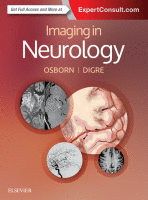Physical Address
304 North Cardinal St.
Dorchester Center, MA 02124

KEY FACTS Terminology Intentionally inflicted injury; abusive head trauma, inflicted head injury, nonaccidental head injury Imaging Plays key role in early diagnosis Disparate brain injuries relative to proffered history Skeletal survey, NECT as initial primary imaging tools Detection/characterization of intracranial…

KEY FACTS Terminology “Typical” epidural hematoma (EDH) Arterial laceration 90-95% supratentorial (temporoparietal most common) Biconvex, unilateral Atypical EDH Unusual etiology Unusual location Unusual shape or density Imaging Venous EDH (10% of EDHs) Fracture (linear, diastatic) crosses dural venous sinus Skull…

KEY FACTS Terminology Blood collection between skull and dura Imaging NECT Hyperdense, biconvex, extraaxial collection > 95% unilateral, supratentorial Does not cross sutures unless venous or sutural diastasis/fracture is present Compresses/displaces underlying brain, subarachnoid space Low-density swirl sign: Active/rapid bleeding…

KEY FACTS Terminology Chronic subdural hematoma (cSDH) Chronic (> 3 weeks to months) subdural blood products Mixed chronic and acute hemorrhage is common Imaging Crescent-shaped extraaxial collection Spreads diffusely over affected hemisphere Surrounded by enhancing membranes Often septated, loculated, with…

KEY FACTS Terminology Subacute (~ 3 days to 3 weeks) collection In subdural space (between arachnoid and dura or within inner border cell layer) Partially liquefied clot, resorbing blood products Surrounded by granulation tissue (“membrane”) Imaging Crescent-shaped, iso- to hypodense…

KEY FACTS Terminology Acute blood between inner border cell layer of dura, arachnoid Imaging NECT as initial screening study Use both bone, soft tissue algorithms Use both standard brain, wide windows (150 HU) Coronal, sagittal reformatted scans best for detecting…

Approach to Head Trauma General Considerations Epidemiology : Trauma is the most common worldwide cause of death and disability in children and young adults. In these patients, neurotrauma is responsible for the vast majority of cases. In the USA and…

KEY FACTS Terminology Li-Fraumeni syndrome (LFS) Autosomal-dominant familial cancer syndrome 75% of LFS cases have loss of function mutations in TP53 tumor suppressor gene Lifelong ↑ risk of osteosarcoma, soft tissue sarcoma, leukemia, breast cancer, brain tumors, melanoma, adrenal cortical…

KEY FACTS Terminology Lhermitte-Duclos disease (LDD) Benign cerebellar lesion; unclear if neoplastic, malformative, or hamartomatous Multiple hamartoma syndrome (MHAM) → autosomal dominant, mutation in PTEN gene, associated with increased incidence of malignancy MHAM = Cowden syndrome (CS); Cowden plus Lhermitte-Duclos…

KEY FACTS Terminology Hereditary hemorrhagic telangiectasia (HHT) Rendu-Osler-Weber, Osler-Weber-Rendu syndrome Autosomal dominant disorder with widely distributed, multisystem angiodysplastic lesions Mucocutaneous telangiectasias with arteriovenous malformations (AVMs) in visceral organs (primarily lungs, brain, liver) Imaging Best diagnostic clue Multiple pulmonary or cerebral…